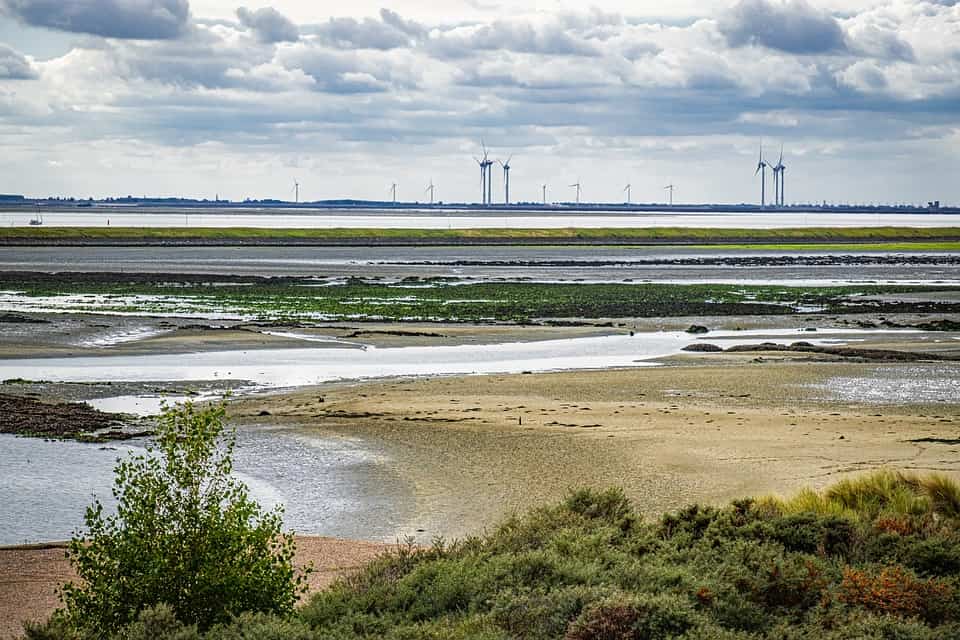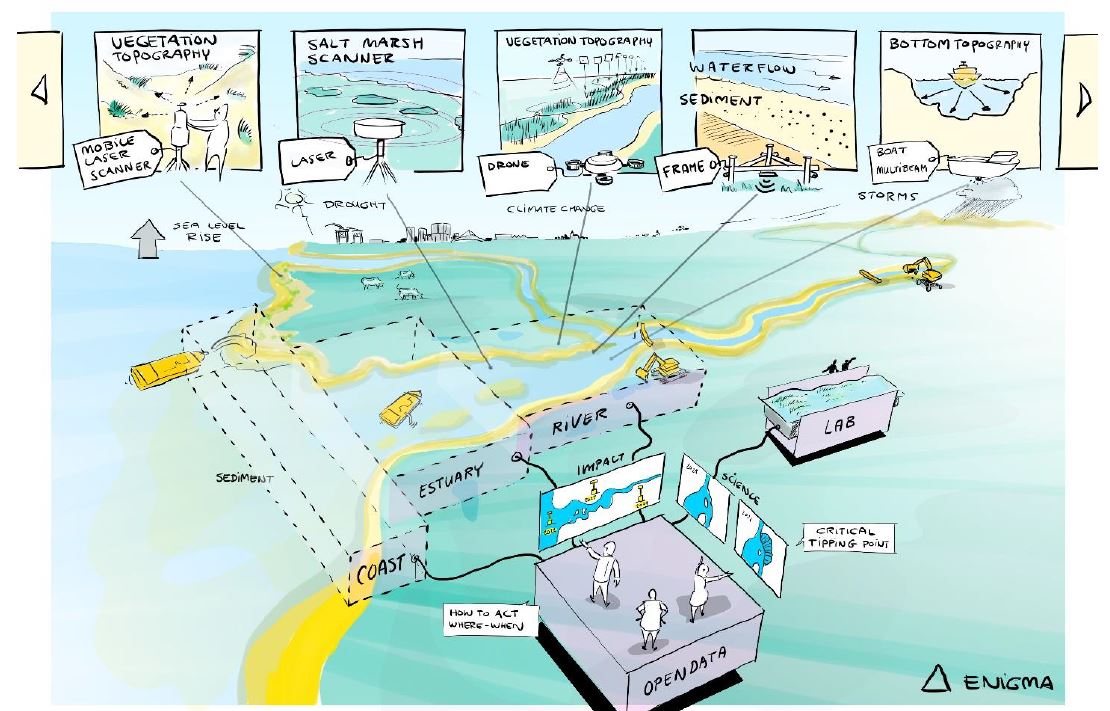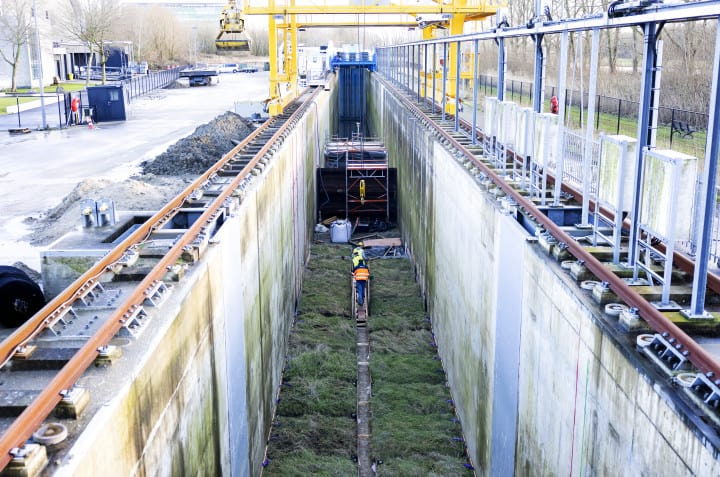
Deltas and coastal plains are attractive places to live: fertile, flat, and open to the sea. These lowlands are, however, also vulnerable to climate change and sea-level rise. To better predict how deltas develop in the future, a thorough understanding is needed of biogeomorphology- how organisms, currents, waves, water, and sand discharge shape the delta-landscape. It was announced today that Δ-ENIGMA, a project focusing on this formation of the delta landscape, is one of the projects that will be funded from the National Roadmap for Large-Scale Research Infrastructure (LSRI) call of the Dutch Research Counsil (NWO).
The project will receive 16 million euros and is a collaboration between Utrecht University, TU Delft, University of Twente, Wageningen University and Research, NIOZ, Deltares and TNO. Biogeomorphology lies at the heart of Δ-ENIGMA, which provides infrastructure for intensive observational and experimental research of the Dutch Delta. This will improve the ability to predict future development and will keep the Dutch Delta livable, even as it changes, the TU Delft writes in a press release.
Dutch contribution to European research infrastructure
Using specialised equipment, it will soon be possible to better assess the effects of various interventions on the Dutch Delta. For example by drones and 3D laser scanners, but also the construction and use of labs and lab facilities. “We are thereby making a Dutch contribution to the European research infrastructure for river-sea-systems, DANUBIUS-RI,” Ruessink says.

Building with Nature
The data that ∆-ENIGMA will provide over the next ten years is crucial for the development of so-called Nature-Based Solutions for climate adaptation. The Sand Motor on the Delfland coast is an iconic example of this approach. Stefan Aarninkhof, professor Coastal Engineering and co-applicant of ∆-ENIGMA on behalf of TU Delft: “We need detailed understanding of natural processes for design and engineering of innovative solutions in river-sea-systems, based on Building with Nature. Together with models to predict the effect of interventions, this is part of the core of our research domain.”
cover photo: Pixabay
Selected for you!
Innovation Origins is the European platform for innovation news. In addition to the many reports from our own editors in 15 European countries, we select the most important press releases from reliable sources. This way you can stay up to date on what is happening in the world of innovation. Are you or do you know an organization that should not be missing from our list of selected sources? Then report to our editorial team.






